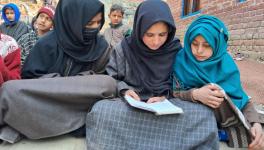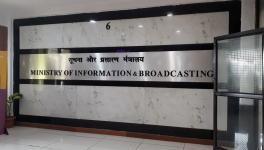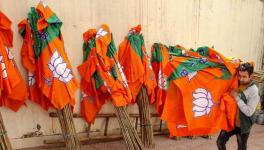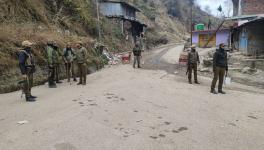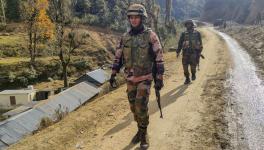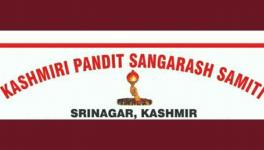Kashmir: Charade of Dialogue
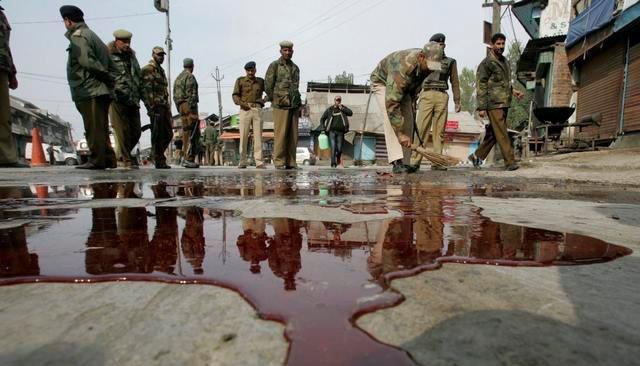
Image Courtesy: Emaze
It would be churlish to criticize the Government of India for appointing a new interlocutor for “sustained dialogue” but for the fact that the same official statement qualifies “aspirations” with a prefix “legitimate” and evident that even this dialogue will be conditional. We know that for successive Governments any espousal of demand outside the confines of Indian Constitution is considered anathema. With the RSS-BJP Government contours of “legitimate” has narrowed as their understanding of Constitution is informed by their ideological demand for doing away with Article 370 and 35A as well as their championing of settling “nationalists” in Kashmir, an euphemism for demographic transformation of Kashmir. As a result list, of what constitutes illegitimate aspirations to the votaries of RSS-BJP is long. The other problem is that the intended focus of the interlocutor is reaching out to youth and there is ambiguity over talking to votaries of “Azaadi”. Because NIA is neither climbing down from targeting Hurriyet (Geelani) nor relenting in its efforts to make high profile arrests, as they did within 24 hours of announcing dialogue by arresting son of Hizbul Mujahideen leader Syed Salahuddin. The message is that ‘separatists’ are on backfoot, militants on the run, and people in disarray, so the time is propitious for engaging in dialogue.
This is the fourth such effort since Atal Bihari Vajpaye Government appointed KC Pant in 2001 followed by appointment of NN Vohra (current Governor) in 2003-08, and the 3 member interlocutors appointed by UPA II Government in 2010 comprising Dileep Padgaonkar, Prof MM Ansari and Radha Kumar. While first two were boycotted by Hurriyet, the third one submitted a report which was rejected by the Union Ministry of Home Affairs. So why should the appointment of a fourth interlocutor, a former head of the Intelligence Bureau arouse confidence, especially when RSS-BJP has vitiated an already worsening situation with its support for military suppression of not just armed militants but even unarmed civilians..
Not too long back, on October 14 Union Minister of State in PM’s Office, Jitendra Singh was reported as saying that militancy is in the “last phase” and militants’ “lifespan…. has been shortened.” Same day Union Home Minister Rajnath Singh disclosed that Army has been given a “free hand” to act against “terrorists”. The news reports citing official data show how successful ‘Operation All Out’ has been and senior officials of Police claimed that this year 12 commanders and 140 other militants have been killed. Although they hastened to add that “recruitment” carries on unabated. Official and corporate media have been over the moon for Government backing military solution, setting NIA sleuths after Hurriyet (Geelani), and for challenging Article 35A in the apex court.
What has receded into background is the fact that since last year, July 8th 2016 killing of Burhan Wani, 90 civilians were killed by the Government forces, 15,000 protestors were injured due to bullets, pellets, tear gas, 1100 suffered eye injuries which blinded scores of people. This apart 11,000 people were detained/arrested and threat of criminal prosecution hangs over them which could financially ruin their families or jeopardize their future. In addition NIA’s targeting of Hurriyet (Geelani) in the name of cracking down on foreign support for resistance, while simultaneously the BJP Government and leaders rake up the issue of Article 35A of the Constitution muddied the ‘troubled waters’. As though this was not bad enough, since September J&K has been gripped by incidence of braid chopping.
Is militancy on its last legs and a military solution achievable through Operation All Out?
If killings were to be measure of success then killing of 12 commanders and 140 militants in encounters is an achievement. But it is always advisable that when looking at J&K we look closely at data thrown at us. Militancy had declined from the peak of 20,000 militants in 1990s to few hundred by 2012-13. This ought to have heralded de-militarisation in J&K. That it did not was because this decline in number of militants did not mean that people had given up on “Azaadi”. Therefore, number of Government forces deployed in Jammu and Kashmir remained by and large unchanged. Also exultation at the decimation in ranks of these 250—300 militants is tempered by anxiety over recruitment. The reason is not far to seek. For all its military successes it has not brought about a transformation in attitude and will of the people. When on October 16 militants attacked a former Sarpanch and PDP leader Mohammed Ramzan Sheikh in which he died and so did a militant of Hizbul Mujahideen the thing to note is that thousands came for funeral of the militant but few went to PDP leader’s funeral. Who is owned as their own and who is disowned tells its story. At encounter sites people still gather and hold protest, shows that although more militants are getting killed the popular mood remains defiant.
Look at the braid chopping incidents which have brought to surface the utter distrust expressed by people towards the Government, military forces and agencies whose presence is ubiquitous. The claim of the Police that it is an issue of mass hysteria and that anti-socials are helping fuel it, finds very few takers. Neither the Chief Minister nor the State Women’s Commission is convinced of this and the latter has begun its own investigation to get to bottom of it.
My own visit to Boniyar last week to inquire into one such incident brings out the difficulty in sifting chaff from the wheat. On October 12 at around 7.30 pm a young mother of two Tabassum in village Batangi A said that while she was moving towards the bathroom someone came from behind used her ‘dupatta’ to cover her face and her braids were chopped. No spray was used. When she recovered and screamed neighbours gathered and some saw two men fleeing. Later three persons were picked up by villagers of Bernatt a short distance from Batangi A. A FIR 37/2017 was registered and Tabassum went to the Boniyar Police Station the very next day and recorded her statement under section 161 of CrPC, in which she also identified two persons from among the three caught by Bernatt villagers. She claimed that these two had come in the afternoon to the village of 12th October to sell Tarpaulin. The Police on the other hand say that they suspect that Tabassum was prompted by villagers to identify two persons. They accept that although two of the three were “Army sources” (locals who work for the army) they were not in the area in the afternoon of 12th October, but actually somewhere else. They further claim that the two “army sources” were on anti-militancy work and had come to meet Manzoor Ahmed Mir of Bernatt who had assured them to effect surrender of a militant presently in Pakistan. Call records would verify their movement and location but police had not asked for this to corroborate their story. The point is that Police go to great lengths to rubbish the braid chopping incident and exonerate the ‘army sources”.
Trouble does not end there as the communal divide between Jammu and Kashmir regions continues to widen. The resignation of Maharaja Hari Singh’s grandson Vikramaditya Singh from PDP because the Party was reluctant to include 100 years of Dogra Rule in school curriculum, declare September 25th as holiday to commemorate Maharaja Hari Singh as well as refusal of the Government to throw out 3000 Rohingyas exposes the attempt to widen polarization between Jammu and Kashmir along communal lines.
It is important to note that Kashmir was sold in 1846 to Raja Gulab Singh in lieu of services rendered to East Indian Company against the Lahore’s Sikh rulers. And they remained the staunchest supporters of British Rule. Besides, Dogra Hindu rule was an unmitigated disaster for people of J&K, in which Kashmiri Muslims bore the brunt of feudal exactions and excesses. So to push for teaching 100 years of Dogra rule to appease the old ruling class which lost power post-1947 arouses strong resentment in Kashmir. As for throwing out 3000 Rohingyas from Jammu it smacks of being a deliberate pursuit of communal fear mongering.
Against chasms which exist in J&K the appointment of a new interlocutor has to be weighed. If it does not inspire confidence in Kashmir the reasons are not far to seek. Successive governments have made it clear that dialogue is a ruse because Indian Government has nothing concrete to offer. Lest we forget Article 370 has been reduced to an empty shell and Government has reiterated that ‘clock cannot be turned back’, implying that what has been eroded cannot be restored. So what is it that the RSS-BJP Government, wedded to repression, to offer when they consider even this eroded autonomy unacceptable?
The charade continues.
Disclaimer: The views expressed here are the author's personal views, and do not necessarily represent the views of Newsclick.
Get the latest reports & analysis with people's perspective on Protests, movements & deep analytical videos, discussions of the current affairs in your Telegram app. Subscribe to NewsClick's Telegram channel & get Real-Time updates on stories, as they get published on our website.









